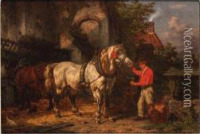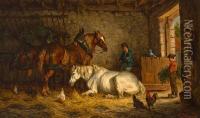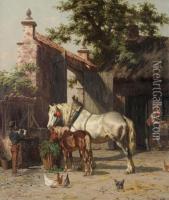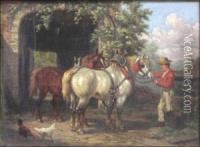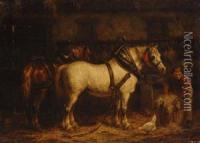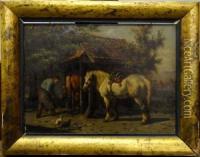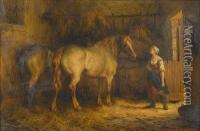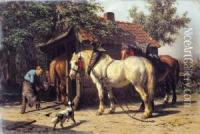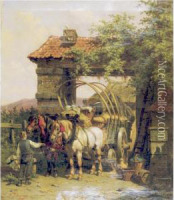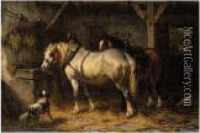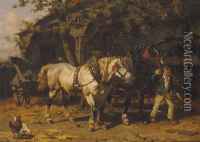Willem Jacobus Boogaard Paintings
Willem Jacobus Boogaard was a Dutch artist known for his skills in both painting and drawing. Born on January 7, 1862, in Amsterdam, Netherlands, he grew up in a time when Dutch art was experiencing a period of transition, with many artists exploring new subjects and techniques. Boogaard demonstrated a strong inclination towards the arts from a young age and pursued his passion with dedication.
Boogaard's work mostly consisted of genre scenes, landscapes, and cityscapes. He was particularly recognized for his ability to capture the everyday life of Dutch society through his genre paintings. His scenes often depicted markets, streets, and domestic interiors with a keen eye for detail and a vivid sense of realism.
During his lifetime, Boogaard's style was influenced by the prevailing trends in Dutch art. He was associated with the Amsterdam Impressionists, a group of artists who were inspired by the French Impressionists and sought to bring similar sensibilities to Dutch subjects. Boogaard's paintings reflected this influence through his use of light and color, as well as a looser brushwork that conveyed the fleeting moments of daily life.
Despite his connection to the Impressionist movement, Boogaard's work retained a distinctly Dutch character, often echoing the traditions of the Dutch Golden Age. He was adept at using light to create atmosphere and mood, a quality that linked him to the legacy of the old Dutch masters.
Willem Jacobus Boogaard's career spanned several decades, during which he exhibited his work at various art shows and gained recognition among his contemporaries. His paintings are now part of various art collections in the Netherlands and have been featured in exhibitions that showcase Dutch art history.
Boogaard passed away on May 3, 1946, in Haarlem, leaving behind a body of work that continues to be appreciated for its contribution to the Dutch artistic heritage. His paintings remain a testament to his skill in capturing the essence of the Netherlands during a transformative period in its art history.
